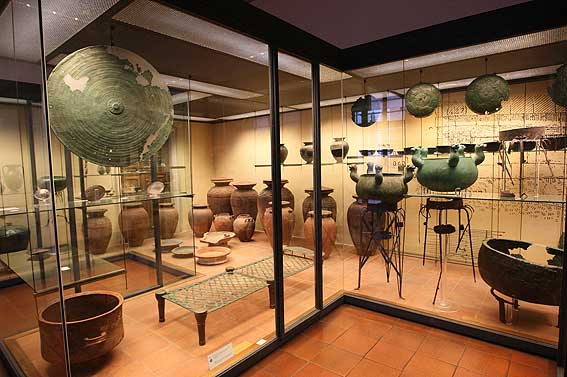Gregorian Etruscan Museum - Vatican Museums

The Gregorian Etruscan Museum in the Vatican Museums, was founded by Pope Gregory XVI and inaugurated on February 2, 1837, was one of the first expressly dedicated to Etruscan antiquities and mainly collects the fruit of excavations carried out in previous years on the sites of some of the most important cities of the ancient Etruria, then included in the territory of the Papal State. The museum will also have access to works already received in the Vatican and with a long history of collecting.

With the end of the Papal State in 1870, the museum saw only sporadic additions, albeit of considerable importance: the Falcioni collection (1898), the Benedetto Guglielmi collection (1935), the Mario Astarita collection (1967), the Giacinto Guglielmi collection (1987).

Through the works on display, which document a flourishing craftsmanship and a peculiar artistic civilization, it is possible to follow the millennial history of the Etruscan people, from the Iron Age (IX century BC) to its progressive and definitive flow into the structure of the Roman state in the 1st century BC.

Video: Gregorian Etruscan Museum - Vatican Museums
Map: Gregorian Etruscan Museum - Vatican Museums
Address: Musei Vaticani, 00120, Stato del Vaticano
Roma (RM) Lazio
Latitude: 41.90631348848535
Longitude: 12.454338669776917
Site: http://www.museivaticani.va/co...
vCard created by: CHO.earth
Currently owned by: CHO.earth
Type: Building
Function: Museum
Creation date: 29-10-2019 09:57
Last update: 07/07/2022